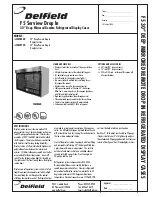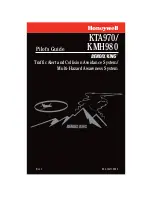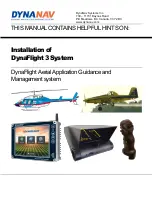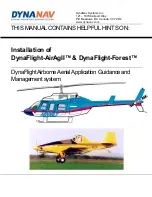
Page 3-2
GTN 625/635/650 TSO Installation Manual
Rev. C
190-01004-02
3.2.3
IFR GPS Plus VOR/LOC/GS Installation
Minimum GTN unit installation requires the following items for an IFR VOR/LOC/GS installation:
GTN 650 (installed in the aircraft manufacturer approved location)
GPS antenna, NAV antenna, and COM antenna.
An external CDI/HSI indicator must be installed in the pilot‘s primary field-of-view (or in the
aircraft manufacturer approved mounting location). The indicator must have a vertical deviation
indicator for glideslope, localizer and VNAV operations/approaches.
A second GPS Navigator
or
a VHF NAV radio
3.3
External Sensors
When GTN is installed with external sensors, these sensors must be installed in accordance with the
manufacturer's data. This manual does not provide information for the installation of specific external
sensors.
The GTN can accept data from multiple altitude, heading, and baro-correction sources. If multiple sources
are used, the GTN will accept data as described in the following sections.
3.3.1
Multiple Uncorrected Pressure Altitude Sources
The GTN can accept altitude from a RS-232 altitude encoder, fuel/air data computer (FADC),
ARINC 429 air data computer (ADC), ARINC 429 EFIS, and ARINC 429 traffic advisory system. If
multiple sources of altitude data are supplied to the GTN, only valid data from the highest priority source
is used (input priority cannot be configured). If the highest priority source becomes unavailable, data is
taken from the next-highest priority source. Priorities of the altitude sources are as follows (from highest
to lowest):
1.
ARINC 429 Label 203 from Airdata
2.
ARINC 429 Airdata/AHRS
3.
ARINC 429 GDU Format 1, 2, 3, or 4
4.
ARINC 429 EFIS Format 2
5.
ARINC 429 Data Concentrator
6.
ARINC 429 Traffic Format 1, 2, 3, 4, 5, or 6
7.
RS-232 FADC Format 1 or Airdata Format 1
8.
RS-232 Altitude Format 1 or 3







































